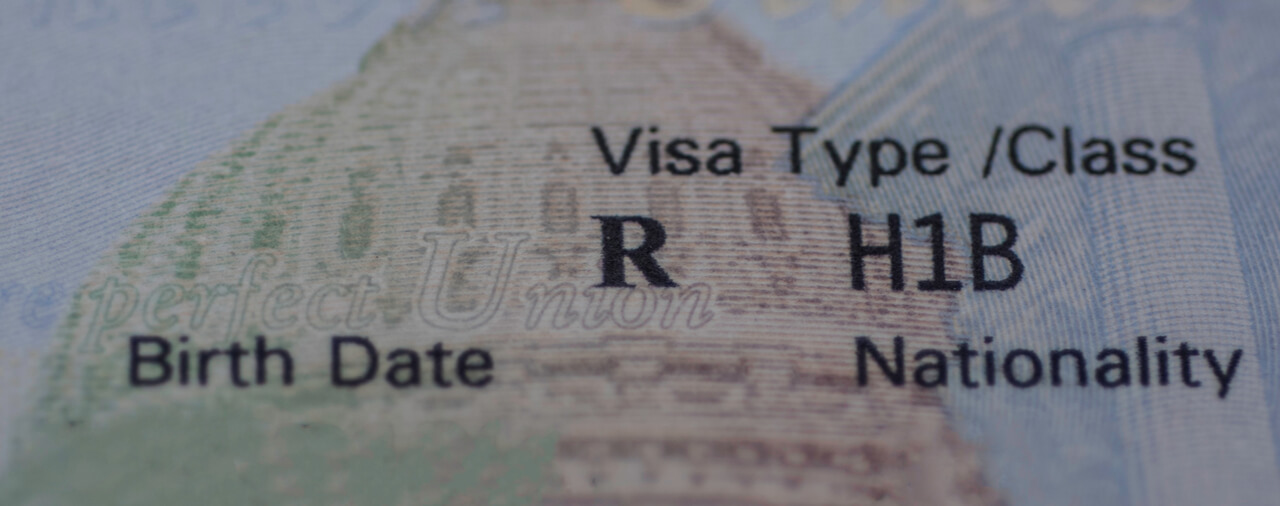- Introduction to Extensions of Stay for H1B Visa Workers beyond 6-Year Limit
- Precondition to both One and Three-Year Extensions
- Rules Regarding the Three-Year Extension of H1B Status beyond 6-year limit, “One-Time Protection Under Per-Country Ceiling”
- Rules Regarding the One-Year Extension of H1B Status beyond 6-year limit, “Special Provision in Cases of Lengthy Adjudication, Exemption from Limitation”
- Rules for Associated H-4 Visa Holders of H1B Workers Applying for Extensions
Introduction to Extensions of Stay for H1B Visa Workers beyond 6-Year Limit
Workers in the United States on nonimmigrant H1B status are limited to a maximum stay of six years in the United States on H1B status. After the expiration of the six year period (the tenure), he or she must remain outside of the USA for at least one year, before they could qualify, if petitioned for by a qualified employer, to obtain another H1B visa, which would again be limited by a new 6 year tenure.
Only those, H1B workers for whom an employer is actively pursuing permanent employment-based immigration path or, in rather limited circumstances, when they are doing so on their own, are given some leeway in this otherwise rather rigid rule. In other words, in order to be able to extend the H1B status beyond the six-year limitation and thus lawfully remain in the United States beyond six years without leaving the country, the H1B worker must be on the way to an immigrant benefit or adjustment of his or her nonimmigrant status to a permanent resident status.
Most H1B workers who endeavor this do so by being sponsored by their current or prospective employers through applying for an employment-based immigrant visa.1 However, due to great demand for employment-based visas and due to the annual caps on the number of such visas that can be issued, many applicants will find that their employer’s applications are still pending as their H1B status is set to expire. In many such cases, an H1B worker may be eligible to extend his or her stay incrementally for up to three years per extension request, or in one-year increments, while at least one of the following — his or her employer’s application for an immigrant visa (USCIS form I-140), PERM (permanent labor certification request) or applicant’s petition to adjust to permanent resident status respectively, remains pending.
Precondition to both One and Three-Year Extensions
Since both the one and three-year extensions of H1B status allow a foreign national to remain in the United States on H1B status, the foreign national must continue to meet all of the requirements for H1B status to be approvable for an extension. 2
Rules Regarding the Three-Year Extension of H1B Status beyond 6-year limit, “One-Time Protection Under Per-Country Ceiling”3
In order to be eligible for a three-year extension of H1B status, the foreign national must meet the following requirements:
Have an approved I-140 petition for an employment-based immigrant visa in the EB-1 (priority worker), EB-2 (professional with advanced degree or person with exceptional ability), or EB-3 (skilled or professional worker) preference categories, or 4, 5
Be otherwise eligible for adjustment of status from H1B worker to employment-based visa in one of the first three preference categories but for the per-country or worldwide cap on employment-based immigrant visas, or,
Had been eligible to apply for adjustment of status but were then subject to cut-off date retrogression6
Under current statutory interpretation, an applicant need not currently be on H1B status or in the United States to be eligible for the three-year extension of H1B status.7
An applicant will be required to file his or her accepted I-140 petition in one of the first three employment-based visa priority categories order to apply for the three year extension. United States Citizenship and Immigration Services (USCIS) will then consult the visa bulletin in effect when the I-140 petition was approved. Provided that the applicant was at the time of the approved I-140 petition ineligible to apply for adjustment of status, he or she will be granted a three-year extension of H1B status. Because the standard for the extension is determined as of when the I-140 petition was filed, the applicant will remain eligible for the extension of H1B status even if he or she is eligible to apply for an I-551 permanent resident card at the time of applying for an extension of H1B status.8
Notwithstanding “one time protection” being part of the title of the statute, current practice allows a recipient of the three-year extension of H-1B status to receive subsequent extensions until his or her adjustment of status application has been approved or denied.9
Rules Regarding the One-Year Extension of H1B Status beyond 6-year limit, “Special Provision in Cases of Lengthy Adjudication, Exemption from Limitation”10
This rule allows certain H1B visa holders with pending adjustment of status applications to certain employment-based visa categories to obtain a one-year extension of stay under H1B status, provided that they meet certain conditions:
Must have previously been issued an H1B visa or have otherwise been provided with H1B nonimmigrant status, or
At least 365 days have elapsed since a labor certification application was filed for the alien (or since an I-140 petition of a labor certification application was not required), or
The labor certification application (or I-140 petition if labor certification was not required) has neither expired nor been denied when the one-year extension of status is sought11
Unlike the three-year extension, the one-year extension does not require an approved I-140 petition. With regard to filed petitions, the only requirement is that 365 days have elapsed since a labor certification application, or I-140 petition if a labor certification application was not required, was filed. This form of relief is also not limited to just applications for the first three employment-based visa preference categories.
Whether an H1B worker is eligible for an extension of H1B status is unclear if the H1B worker’s labor certification application or I-140 petition is withdrawn by an employer on account of the H1B worker switching jobs pursuant to H1B status.12 Although current practice suggests that an H1B worker in this situation might still be eligible for an extension, he or she should consult with an immigration practitioner to assess the likelihood of approval and the full breadth of available options.
As with the three-year extension, being in the United States is not a prerequisite to applying for a one-year extension of H1B status. However, the 365-day requirement leads to ambiguity for applicants who begin their adjustment of status process within 365 days of the expiration of their H1B status. In such cases, the applicant may be advised by an immigration practitioner to leave the United States prior to the expiration of his or her H1B status. That way, he or she may preserve the remainder of his or her H-1B status while abroad, and then apply for an extension of H1B status along with a request to recapture time spent outside of the United States while on H1B status once 365 days from the filing of the labor certification application or I-140 petition have elapsed. Such people with pending I-140 petitions in one of the employment-based visa preference categories who may be eligible for a three year extension but for not having an approved I-140 petition may request premium processing of their I-140 petition order that they would be able to apply for the three-year extension instead of a one-year extension.13
Extensions under this provision are for one-year increments, and must be renewed if the applicant remains eligible.14 A request for a one-year extension may be combined with a request for an extension until the end of the six-year period by an H1B worker had left the country and then returns to recapture time on H1B status, but this combination extension may not be for more than three years.15
In order to apply for a one-year extension of H1B status, an applicant needs proof that he or she filed a labor certification application 365 days before applying for the extension, and documentation that an I-140 petition was filed on their behalf within 180 days of the labor certification. If the labor certification application is being appealed, the applicant must provide proof that the denied Form 9089 labor certification is under reconsideration by the Department of Labor or the Board of Labor Certification Appeals. If a labor certification application was not needed, then he or she must submit proof that an I-140 petition was filed on his or her behalf 365 days before applying for the one-year extension of H1B status.16
Rules for Associated H-4 Visa Holders of H1B Workers Applying for Extensions
H-4 family members of H1B workers are eligible for extensions of H4 status provided that they continue to remain eligible for H-4 status, and that the principal H1B worker procures the three or one-year extension of stay. 17
However, current practice requires that, if the H-4 family member also holds H1B status, or at one time held H1B status, he or she must independently be eligible for an extension of H1B status.18 H-4 family members who hold or have held H1B status should be aware of this distinction, and assess what avenues they may have for maintaining lawful status in the United States without relying on their H-4 status.
Pelta, Elanor, and Vazquez-Azpiri, A. James. “Chapter 1: Extensions of Stay in H1BB Status: AC21 [PDF version] §§ 104(c) and 106(a).” ALIA’s Focus on Immigration Practice Under AC21 [PDF version]. Washington, D.C.: ALIA Publications, 2009. 5-27. Print. ALIA’s Focus Ser.
- Refer to the overview of applying for employment-based visas
- Elanor Pelta and A.James Vazquez-Azpiri. ALIA’s Focus on Immigration Practice Under AC21, ALIA Publications, (2009), 11; citing INA § 101(a)(15)(H)(1)(b)
- See AC21 §§ 104(c)
- Pelta and Vazquez-Azpiri 12
- Refer to the overview of applying for employment-based visas for more information about preference categories
- Pelta and Vazquez-Azpiri 18; discussing foreign nationals who applied for adjustment of status but were subject to cut-off date retrogression
- Id. 14; citing Michael Aytes, Associate Director, Domestic Operations, USCIS, “Guidance on Determining Periods of Admission for Aliens Previously in H-4 or L-2 Status; Aliens Applying for Additional Periods of Admission beyond the H-1B Six Year Maximum; and Aliens Who Have Not Exhausted the Six-Year Maximum But Who Have Been Absent from the United States for Over One Year” (Dec. 5, 2006), supra note 4, at 2-3
- Id. 22
- Id. 24; citing Michael Aytes, Acting Direction of Domestic Operations, USCIS, “Re: Interim guidance for processing I-140 employment-based immigrant petitions and I-485 and H-1B petitions affected by the American Competitiveness in the Twenty-First Century Act of 2000 (AC21) (Public Law 106-313)” (Dec. 27, 2005), supra note 4, at 7
- See AC21 § 106(a)
- Pelta and Vazquez-Azpiri 12; citing Donald Neufeld, Acting Associate Director, Domestic Operations, USCIS, “Applicability of Section 245(k) to Certain Employment-Based Adjustment of Status Applications filed under Section 245(a) of the Immigration and Nationality Act” (Jul. 14, 2008), supra note 4, at 6
- Id. 25
- Id. 20
- AC21 § 106(a)(2)(b)
- Pelta and Vazquez-Azpil 24; citing Neufeld Memo, supra note 4, at 5
- Id. 22
- Id. 16; citing William R. Yates, Acting Associate Direction for Operations, USCIS, “Guidance for Processing H-1B Petitions as Affected by the Twenty-First Century Department of Justice Appropriations Authorization Act (Public Law 107-273): Adjudicator’s Field Manual Update AD 03-09” (Apr. 24, 2003), supra note 4, at 3
- Id. 16; citing Aytes December 2005 Memo, supra note 4, at 6-7





